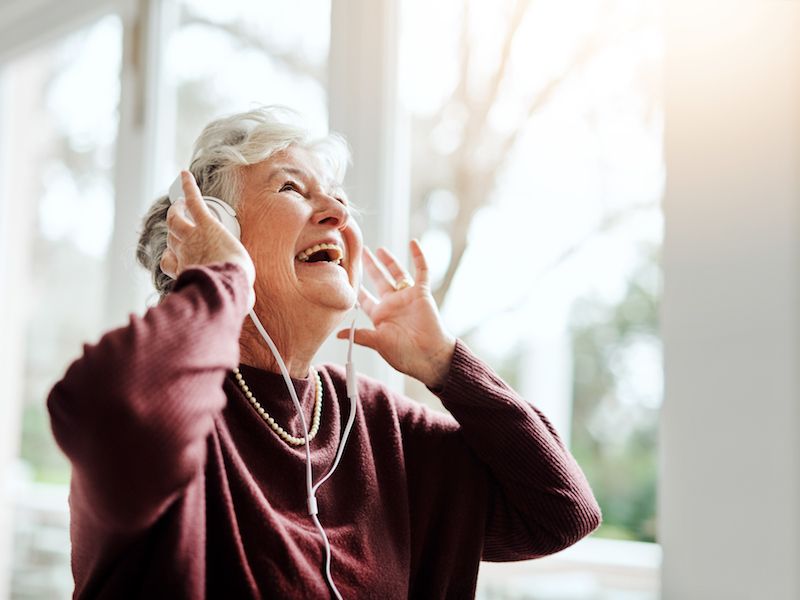
People who work in loud surroundings like construction sites or at heavy metal concerts are not the only people impacted by noise related hearing loss. It doesn’t even need to be work-related, leisure-related noise exposure can be dangerous, also. What kind of exposure are we talking about? Music, gaming, streaming video or anything else that you would listen to through earbuds or headphones.
You may be surprised to learn that a mobile device can get that loud. But these devices can achieve sustained volumes of over 105 dB, which is close to the ordinary human pain threshold. This is the volume at which noise starts to literally hurt your ears. So what’s the plan to protect against this type of noise-related loss of hearing?
The volume level here is important. An easy shorthand that’s widely recommended is the 60/60 rule: Listen with the volume at or below 60% for no more than 60 minutes in a single session (because the length of sound exposure matters, too).
Make a Setting on Your Hearing Aids For Listening to Music
If you have hearing aids, you’re most likely streaming your device right to your hearing aids, so make certain the volume is not too loud or that you’re not trying to drown out other sounds with your music. Also, ask us about how best to listen to music. Hearing aids aren’t designed to increase the quality of music like they do with voices so if you’re really into music, you might have noticed this. We may be able to change the configuration to lessen feedback and noise while maximizing some frequency ranges to improve the quality of sound while listening to music.
Picking out Headphones
If you don’t own hearing aids, there are lots of options for picking out headphones. There are various things to think about, though it’s mostly a matter of personal preference.
Headphones That go Over The Ears
Over the ear headphones are becoming popular again but you probably won’t find the old foam covered speakers that used to come with a walkman. Often surprisingly expensive, they feature lots of color options and celebrity endorsements, and of course, exceptional sound quality. And unlike those little foam pads, these cover the whole ear, limiting outside noises.
Main-stream perception is that these are less dangerous than in-ear headphones because the source of the sound is further from your eardrum. But because the speakers are bigger they are often capable of much louder volume. Additionally, noise-canceling may help you ignore the crying baby on your flight, but in other circumstances, it can silence sounds you need to hear (such as a car honking). Having said that, because they block out outside sound, you can normally reduce the volume of what you’re listening to so it’s not so loud that it will injure your hearing.
Earbuds
The normal earbuds that come with devices such as iPhones are known for their inferior sound quality, though lots of people still use them because hey, they were included with the phone. Especially, with newer Apple devices, it’s simply easier to use the earbuds which came with the device because it most likely doesn’t have a headphone jack.
Earbuds also don’t cancel out sound so the drawback is, you have a tendency to turn up the sound level. It’s generally believed that inserting earbuds so close to your eardrum is the main problem but it’s actually the volume.
Noise Blocking Earbuds
Many people buy earbuds with a rounded, rubbery tip both because they’re more comfy than standard earbuds and better at blocking outside sounds. A seal that blocks outside sound from entering is formed by the rubber tip which molds to the shape of the ear. But these earbuds can also block out noises you need to hear and loud volume is still the number one problem. And if you have hearing aids, clearly these won’t work for you.
You may have to try out quite a few pairs before you find headphones that work for you. Your expectations, acoustically, will vary depending on what kind of use you normally give them. The significant thing is to find headphones that make it comfortable for you to enjoy at a safe sound level.
Don’t Cut Corners When it Comes to Your Hearing
How can you be certain it’s safe? If you have a smartphone, you can get an app for that, you can get the National Institute for Occupational Safety and Health’s free Sound Level Meter app. You can get different apps, but studies has found that the accuracy of these other apps is hit-and-miss (additionally, for whatever reason, Android-based apps have been shown to be less accurate). That prompted NIOSH to develop an app of their own. You can measure external noise using the app, but you can also measure the sound coming from your device’s speakers, in other words, the true volume of what’s going to your ears. You have to put in a little effort, but taking these kinds of protective steps can help protect your hearing.
